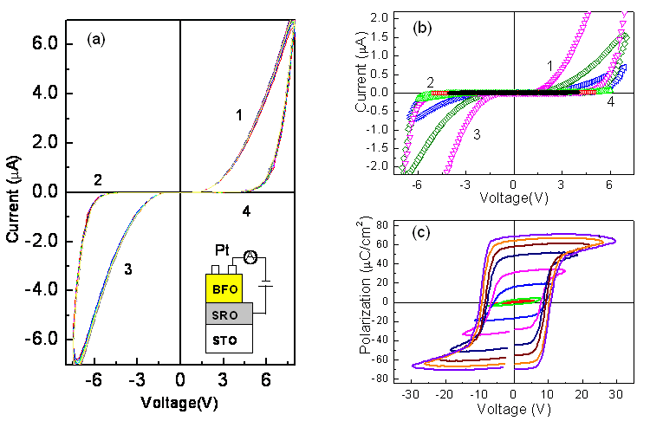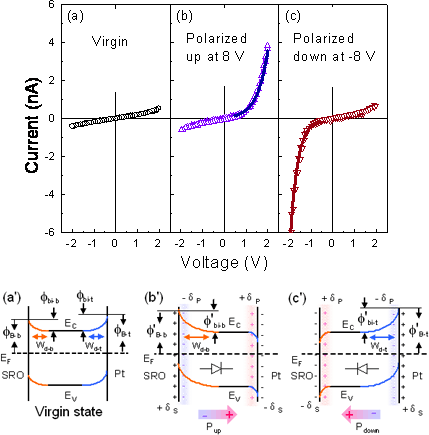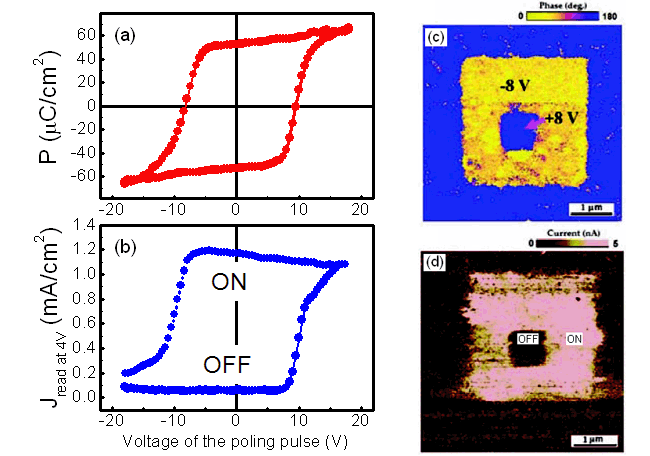Polarization-modulated conduction and novel resistive memory in epitaxial BFO thin films
Date:23-05-2011 Print
 |
| Fig.1 Current-voltage curves and ferroelectric hysteresis loops. (a) IV curves of the BFO epitaxial thin films. The hysteresis of IV indicates a resistive switching behavior. (b) IV curves measured with various sweeping voltage. (c) ferroelectric polarization loops of the BFO thin films. |
 |
| Fig.2 Switchable diode effect and the possible mechanism. (a), (b) and (c) show the conduction behavior of the the BFO thin films at three different states. The thin film polarized with external field show diode-like rectifying behavior and the direction of the diode can be switched with polarization switching. (a’), (b’) and (c’) show the Schematic energy band diagrams, illustrating the variations in Schottky barriers from back-to-back diodes at virgin, to a forward diode at polarized up, and a reverse diode at polarized down, respectively. |
 |
| Fig. 3 The evidence for polarization dependent conduction in BFO thin films. After time integrations of the displacement currents under different V, P–V hysteresis loops in (a) obtained for BFO thin films in comparison with their hysteretic current loops in (b) at fixed reading voltages of 4.0 V, after each pulse voltage in P–V loops. (c) Piezoelectric phase image of original preferred polarization patterns (downward) switched upward through PFM tip scanning of the film surface at –8 V within a square area of 3 × 3 um2. After that, the polarization in the center 1 × 1 um2area is scanned downward at + 8 V. (d) The current mapping at acquired in the same region as in (c). |

